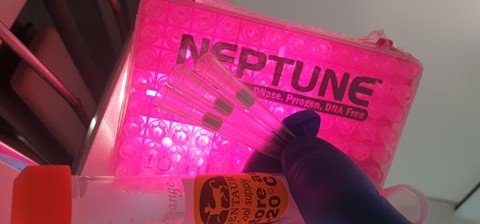Immunologists use ELISPOT kits for cost-effective screening
Laboratories have found that they can drastically reduce the cost of their sample screening and analysis workflows by introducing cheaper technologies like ELISPOT. ELISPOT is an effective accompanying technology for analytical methods such as flow cytometry and other expensive methods. Researchers can use ELISPOT to visually quantify which of their samples secrete a cytokine of interest with greater specificity and sensitivity at a fraction of the cost. Instead of using large amounts of flow cytometric antibodies to analyze each sample to be analyzed, researchers use ELISPOT to search for suitable samples that have surface antigens or cytokine secretion profiles that they want to analyze further. In connection,
In contrast to the expensive analysis methods such as cytometry, which ELISPOT can partially replace, ELISPOT kits are inexpensive, do not require any additional device infrastructure and do not require advanced training. In addition, ELISPOT kits require fewer cells than methods such as flow cytometry or CyTOF to study the same phenomenon due to the high sensitivity and background noise during analysis. While many analyzers require tens of thousands of events to generate a usable data set, thanks to its high sensitivity, ELISPOT can deliver results with a few dozen specific cells per sample. Because of these favorable properties, researchers are using ELISPOT everywhere as a precursor to other analysis methods.
ELISPOT is powerful and inexpensive

The integration of ELISPOT with more extensive analysis methods may seem a bit strange to some researchers, since the technologies generate different types of data that are not directly comparable. Finally, the violet or bruises of an ELISPOT kit do not describe cellular subpopulations, but only the cytokine secretion by the cell populations on the plate. Since ELISPOT uses living cells that are plated on a 96-well plate, each well contains approximately 100 μl of medium. Most researchers believe that the volumes needed are flexible, which means that cells can be plated at different concentration ranges if researchers prefer. This means that ELISPOT can be calibrated
ELISPOT is becoming more attractive due to the high costs associated with harvesting deep data. Although user-friendly flow cytometry systems have made it to the market and later to the laboratory, the flow costs are high. Other methods of analysis are even more expensive. At the same time, very experienced personnel are required each time an experiment is used if these instruments are used. The same applies to the interpretation of the data that the instruments generate. However, ELISPOT does not suffer from these disadvantages.
Use ELISPOT to reduce the cost of sample screening
In order to understand where ELISPOT brings the greatest benefit, a short thought experiment is required. Imagine a laboratory testing the immune response of a subset of T cells characterized by IFN-y secretion after exposure to antigen epitopes. If the laboratory were to use flow cytometry or comparable technology for each sample, it would take a handful of different antibodies just to make the population of interest analyzable using cytometry. In addition, they would then have to use an intracellular staining antibody to detect the IFN-y secretion that would characterize their population of interest.
Performing the required staining protocol and fluorochrome compensation would take a lot of man hours – and it could prove difficult because there are too few cells to analyze. It would also be very expensive to analyze this stain to analyze hundreds or thousands of different epitopes. In many samples, the researchers may not find IFN-y secretion if the cells do not respond to the antigen. With flow cytometry, the high cost, coupled with the risk of getting negative results, could be too high a risk. The same does not apply if the laboratory uses ELISPOT.
With a little time spent in the laboratory and creative experimental design, ELISPOT kits can be powerful tools for reducing costs. If the researchers who study IFN-y secretion have integrated ELISPOT as a screening method, they can see which of their samples have been shown the criteria they wanted to examine before further testing with a more intensive test. The ELISPOT kit is extremely inexpensive and can provide researchers with exactly the information they are looking for: which antigens trigger a cellular response.
Once most of the immunogenic epitopes have been identified from the results of the ELISPOT kit, the researchers could investigate the cellular response to these epitopes more closely. This enables the researchers to create a robust data set of samples that has the properties they are looking for – but without spending thousands of euros on the characterization of irrelevant samples.
By using the scalability and cost-effectiveness of ELISPOT, researchers can create the data sets they want without compromising the budget they’re sticking to.

